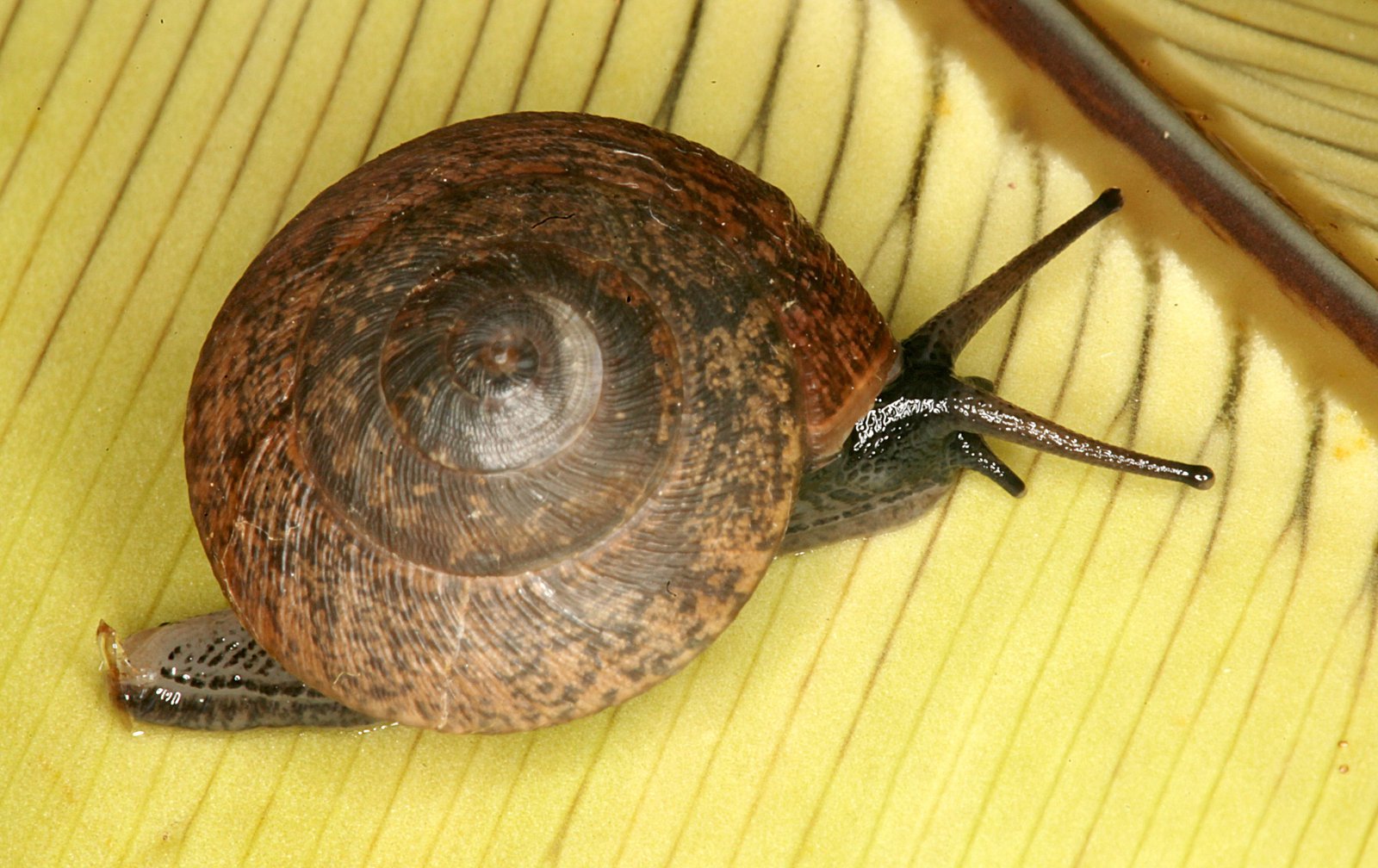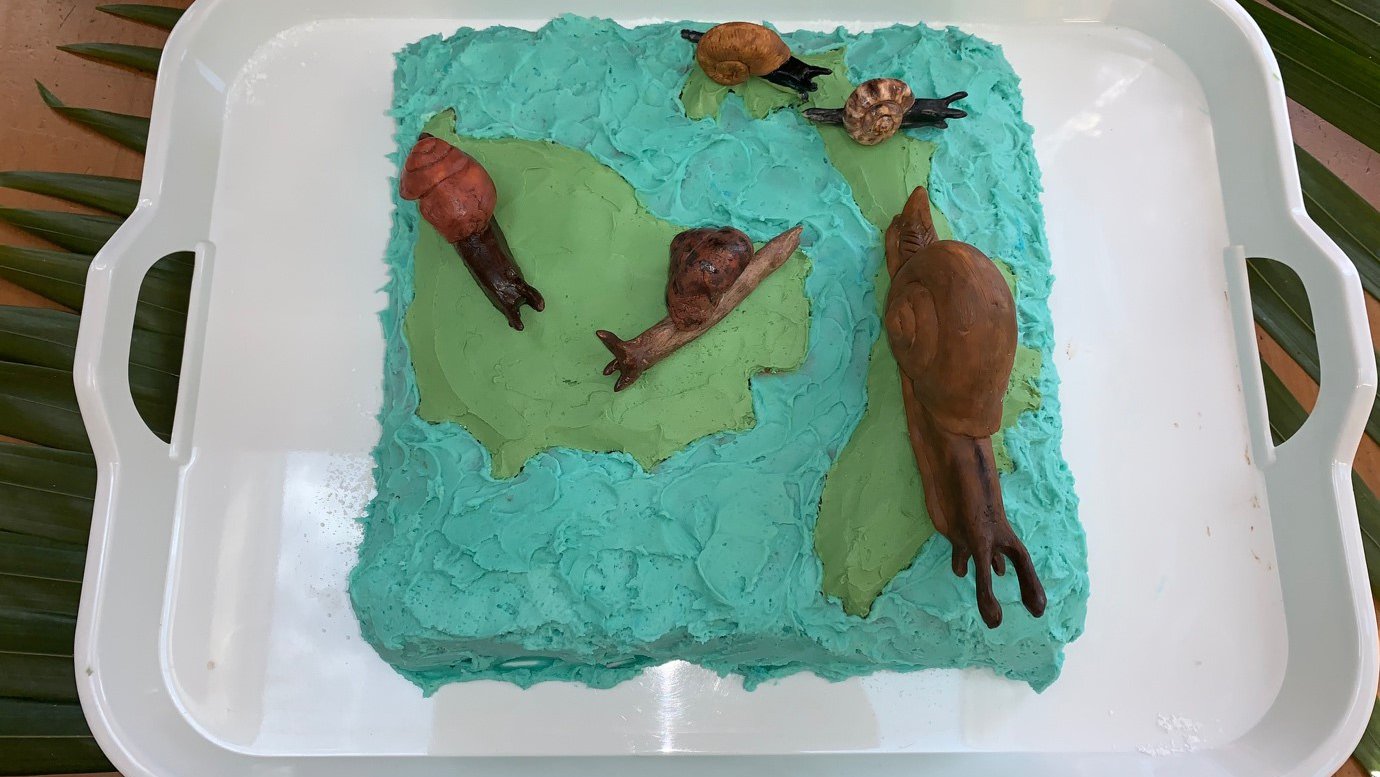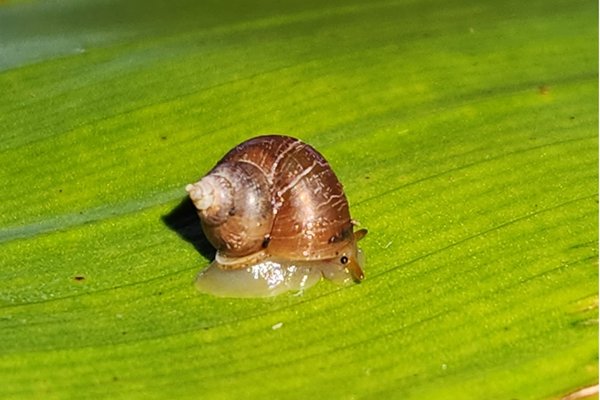How does a land snail become a threatened species?
September 7th, the day the last thylacine died in captivity in 1936, is National Threatened Species Day. Founded to raise awareness of Australia’s plants and animals at risk of extinction, it’s also the occasion of Australia’s Threatened Species Bake-off.
For this extraordinary bake-off, I have taken the opportunity to put on my apron and create a cake featuring some of our native land snails. Did you know that the humble land snail represents the group worldwide with the highest number of extinct species? They also have a correspondingly high number of species listed as threatened – and many more vulnerable species that are not formally listed. You may wonder, what is it that makes these tiny but fascinating creatures so susceptible?

Pseudocharopa whiteleggei – Critically Endangered snail from Lord Howe Island.
Image: Adnan Moussalli© Museums Victoria
Many of the land snails that have suffered the worst declines are island endemics. Islands often harbour large suites of endemic species and have long fascinated evolutionary biologists. Island species can evolve into unusual forms, with gigantism often occurring among small animals - the Dodo, which evolved from a small pigeon-like ancestor, is an example of this phenomenon. The islands of the Pacific Ocean have long been home to a huge biodiversity of land snails, but sadly, many of these are now extinct.

Advena campbelli, Critically Endangered land snail from Norfolk Island
Image: Adnan Moussalli© Museums Victoria
For some years now, I have been studying the land snails of Lord Howe Island and Norfolk Island, and together with Dr Frank Koehler, have recently released a field guide to the Lord Howe Island land snails. These two islands house Australia’s highest diversity of land snails, with around 140 described species between them. However, several species are considered to be extinct and ten more are listed in Australia as Endangered or Critically Endangered. Five of these species feature on my cake. However, both islands have many other species that are still thriving and very abundant. So, what is causing the decline of some species but not others?

View of Lord Howe Island taken by Dr Frank Kohler
Image: Frank Kohler© Australian Museum
One of the major threats to island endemics is introduced predators. Much of the devastation of the snail fauna of the Pacific Islands has been caused by an introduced carnivorous snail, the Rosy Wolf Snail, that preys on and eats the native species. We are lucky to have escaped this species in Australia so far. However, our native island species have suffered badly from the introduction of rats and mice. Rodents are voracious and eat anything and everything – seeds, seedlings, snails, other invertebrates, bird eggs and nestlings – and the largest snack that provides the most bang for their buck will be the first to be eaten.

The Rosy Wolf Snail, Euglandina rosea
Image: Dylan Parke, FlikrCC BY-SA 2.0
Among snails on islands where rats have been introduced, one thing is clear: it is generally the largest species that disappear first or suffer the most, because they are preferentially sought by the rats. Lord Howe Island has some remarkably large snail species, larger than their mainland cousins, due to the island effect that causes gigantism. Sadly, the large species on both islands have suffered the greatest declines.
Another significant threat is climate change. Snail distribution is heavily affected by the availability of moisture, and most species are found in rainforests, sometimes in pockets of moister vegetation surrounded by less hospitable open woodland. On an island, as the climate slowly warms and dries out, there is nowhere for the endemic species to escape to, and mortality is high. On Lord Howe Island, the two tallest mountains are usually surrounded by clouds, and their summits have a unique cloud rainforest. However, after a gradual reduction of the number of days of cloud cover, the entire ecological community was listed as Critically Endangered in 2012. All of Lord Howe Island’s Critically Endangered species are from those mountaintop summits.
Reproductive rate and life history probably also play a significant role, although at present this is less well understood. Species with lower fecundity and a slower growth rate, producing small clutches and taking longer to reach reproductive maturity, are more vulnerable to extinction. We know that reproductive strategies differ significantly among land snails, but for most of our endemic snail species, detailed information is lacking. Studying these species, and the relationship between them, helps us to predict which species might be more susceptible to extinction.
But the news is not all bad! Lord Howe Island has recently implemented a rodent eradication program and the island has been rat-free since October 2019, which is already having a significant positive effect on many plant and animal species. We are expecting this to be of huge benefit to the native land snails, and we will be monitoring and documenting their recovery to provide much-needed data. And on Norfolk Island, we recently observed a living population of the largest land snail species, once feared extinct, but still surviving in a small rainforest gully – and now with added protections in place. By studying these rare creatures, documenting their distribution and learning about their anatomy, genetics, reproductive strategies and relationships to other species (and occasionally baking cakes), we can continue the fight against extinction.
Dr Isabel Hyman, Malacology, Australian Museum Research Institute.















